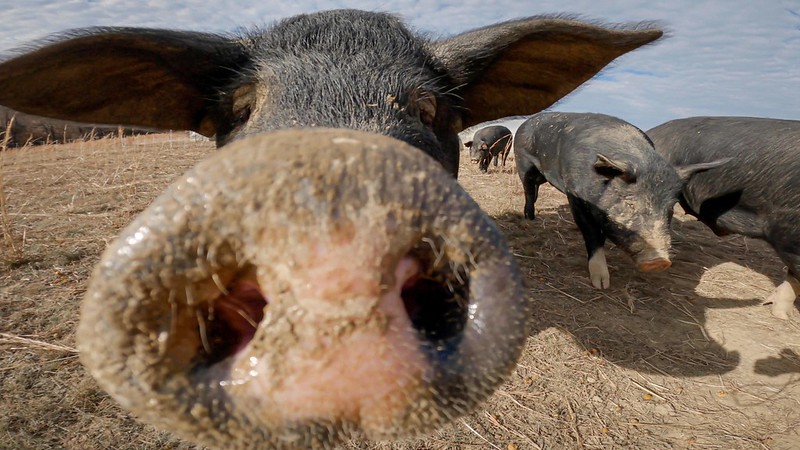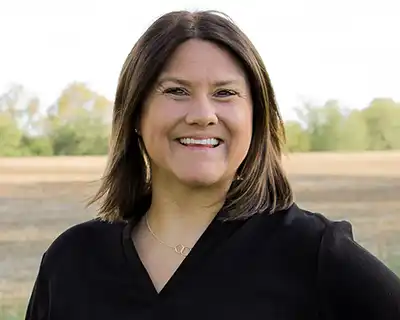A new sustainability assessment program aims to help pork producers easily gather and analyze on-farm data to benchmark progress while working toward industry goals that include lowering greenhouse gas emissions, improving animal well-being and giving back to communities. The On-Farm Sustainability Report program and the pork industry’s latest Sustainability Report was launched in mid-February 2022 and includes a commitment to reduce greenhouse gas emissions 40% industrywide by 2030.
“I had never in the past gotten a report that put numbers to it and showed me what I was doing,” explains Dale Stevermer, a Minnesota pork producer and board member for the National Pork Board, who recently received his 2020 on-farm report. Stevermer’s 2,000-head feeder-to-finish operation raises pigs into the Compart Family Farms system. “My erosion numbers were dramatically better than the statewide average. The first year was a validation of what I’m doing. I’m personally in a holding pattern, validating and verifying what I’m doing and starting to evaluate what my next step will be.”
The on-farm assessments were developed through a producer-led collaboration of the National Pork Board (NPB), the National Pork Producers Council and state pork associations, explains Dr. Sara Crawford, vice president of sustainability for NPB. Additionally, producers solicited feedback from food retailers, food service and NGOs, as well as non-pork farmer associations such as National Corn Growers Association and United Soybean Board.
“The producers were determining what goals would be set, the time and scope of reductions, KPIs and how we could measure those,” Crawford says. Work in 2021 centered on “setting those key performance indicators.”
Several attributes distinguish the pork industry’s sustainability targets and on-farm assessment from other sustainable agriculture efforts, these experts say.
First, the effort aims to reduce farmers’ time commitment and lower the hassle factor of inputting sustainability data. Stevermer reports he only invested about an hour to work with the NPB’s independent contractor—Sustainable Environmental Consultants—to capture on-farm data via a review of records and a farm visit. They assessed how his operation addresses the pork industry’s six We Care principles and accompanying metrics.
Second, the program’s key performance indicators are based on actual data from individual operations, rather than predictive modeling, Crawford adds.
“Getting real data to show what’s actually being used on farm, that’s a difference,” she says. “I commend our pork producers for being progressive and saying, ‘Let’s get actual on-farm data that’s going to go into the system and share that story for pork.’”
Third, the annual pork sustainability report fed by the On-Farm Sustainability Report program reflects a multi-pronged approach including:
- Aggregation of all pork producers’ animal well-being certifications;
- A diversity, equity and inclusion metric reflecting pork producers’ commitment to growing and retaining a diverse workforce; and
- Environmental metrics spanning a range of stewardship commitments including water-use efficiency, water quality, conservation agriculture adoption, biodiversity and targets such as a 40% reduction in greenhouse gas emissions by 2030.

NPB will anonymize data captured at the farm level and roll it into a state-level summary of pork producers’ sustainability journey. That state data will, in turn, feed the national-level sustainability report that can illustrate producers’ investments for a range of audiences, including retail companies, foodservice chains and exporters.
“Producers will do this on an annual basis moving forward, and it will follow along with the crop cycle,” Crawford says.
On Stevermer’s operation, the past five years have brought significant conservation-focused changes. He has switched to no-till and plants cover crops. He’s also incorporating manure from his hog barns using low-disturbance openers.
He encourages pork producers considering whether to participate in the program to consider the opportunities it can create.
“The data that comes back to you in your report is your own data. You can hold it as closely as you want,” Stevermer explains. “We have to be able to maintain our freedom to operate, and even more so, enable people to have the social license to enjoy pork so that when they go to the store and look at the various proteins they can buy, they look at it and say, ‘Pork, that’s good for me and good for the planet.’ That allows us to continue to operate our farms because there’s demand.”
To learn more about On-Farm Sustainability program or to request more information on participation, visit the Pork Board’s website.



